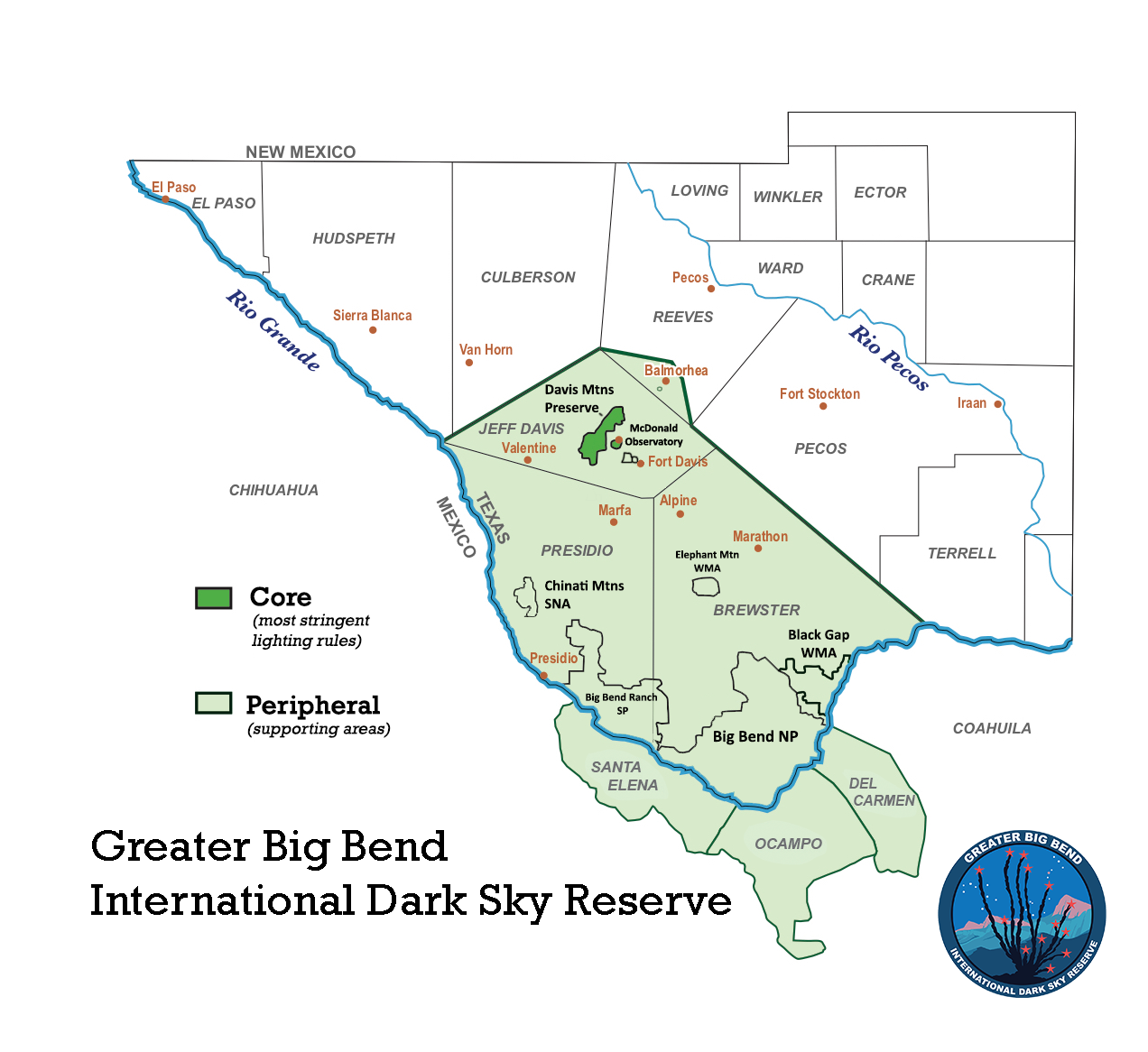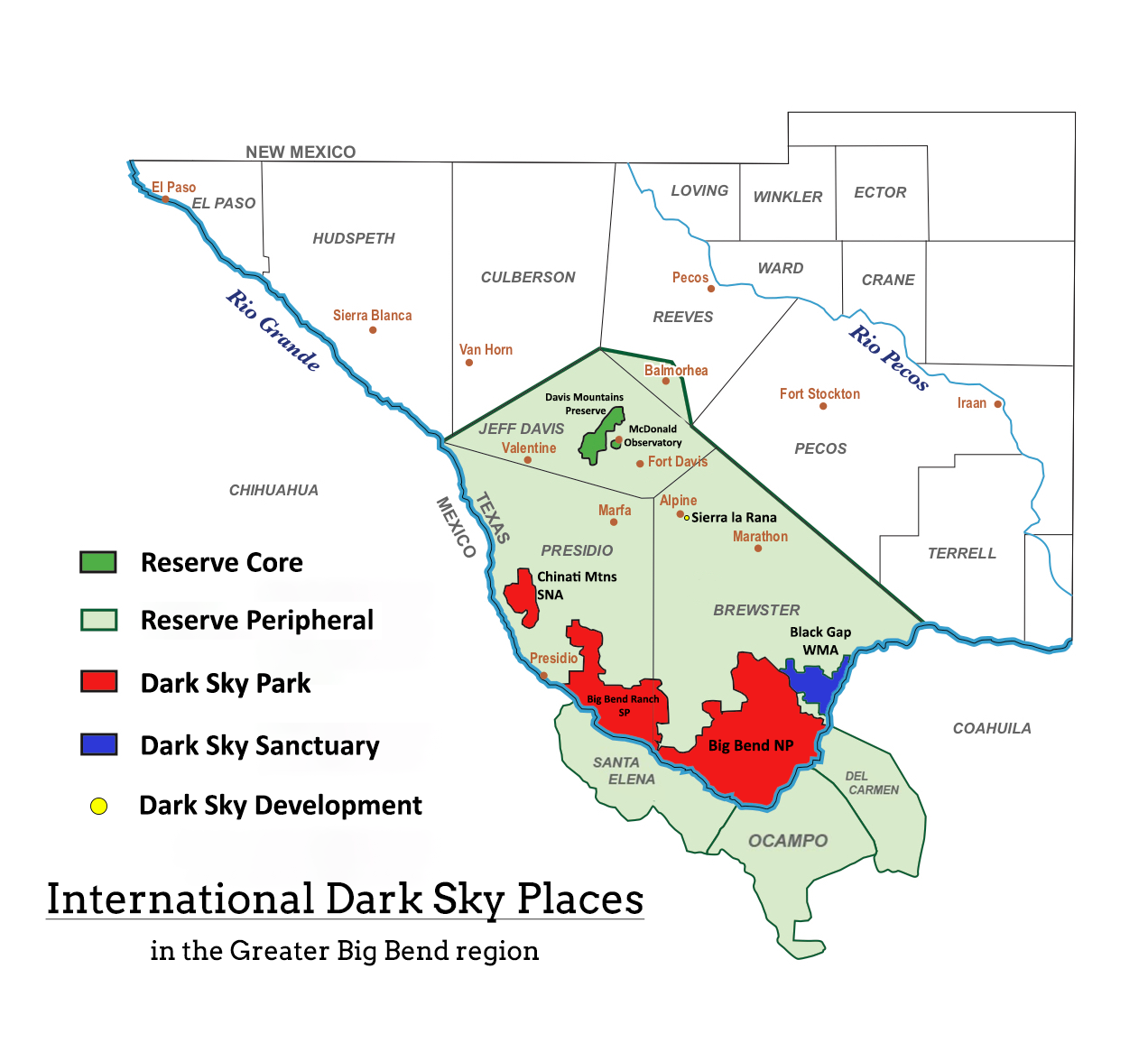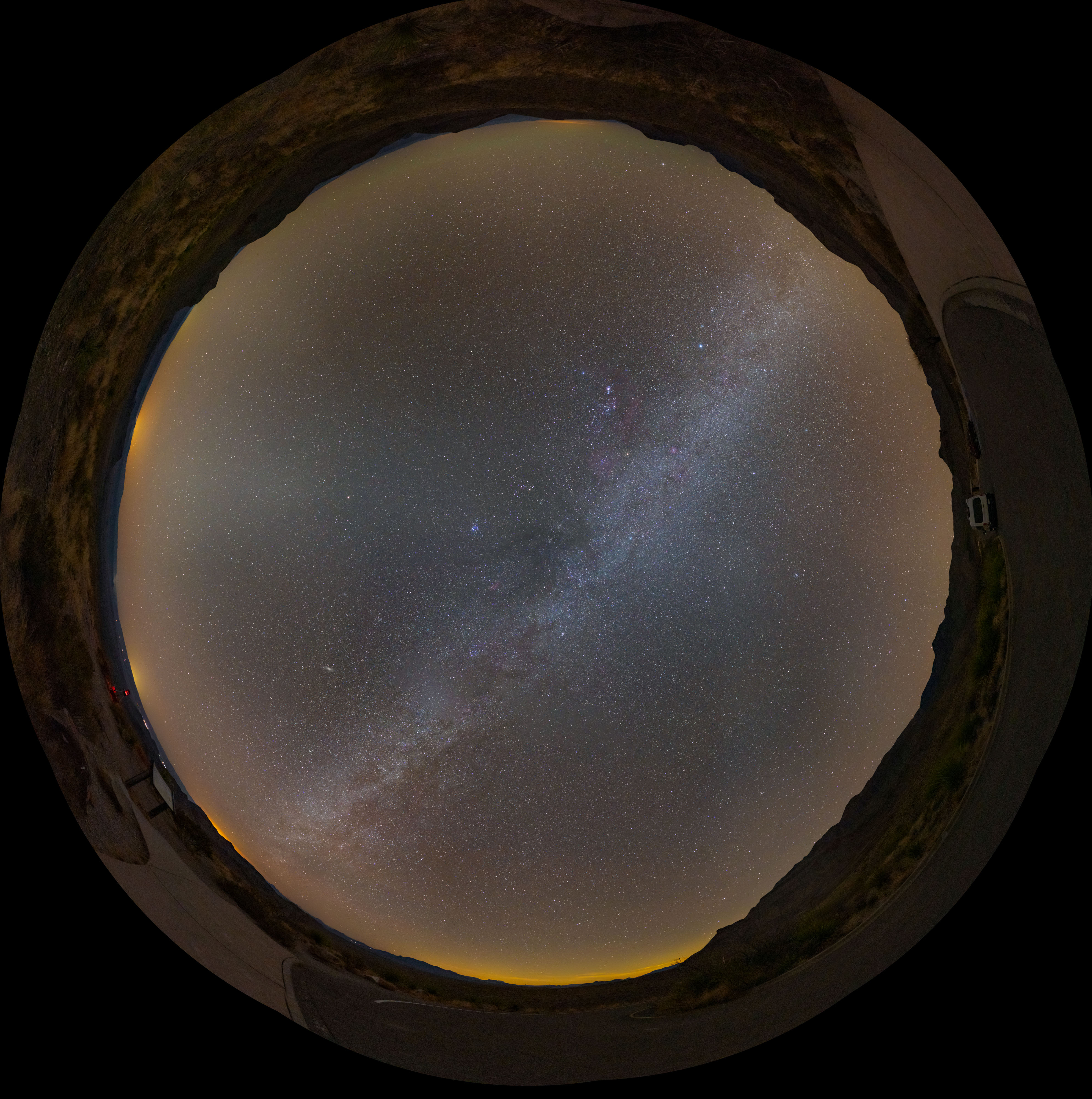Dark Sky Reserve
A Dark Sky Reserve is a land possessing exceptional quality of starry nights that is specifically protected for its scientific, natural, educational, or cultural value. The International Dark Sky Association (IDA) certifies areas as dark sky places.
The Greater Big Bend International Dark Sky Reserve (DSR) is a partnership between many communities, parks, businesses, and conservation groups in Texas and Mexico to help protect our shared night sky through better outdoor lighting. Covering over 15,000 square miles, the Greater Big Bend International Dark Sky Reserve is the largest IDA-certified reserve in the world and the first to cross an international boundary.
The goal of the DSR is to protect the night sky from the spread of light pollution through the use of night-sky friendly lighting practices.

Benefits
- Environment: All life on Earth, including human beings, evolved to the rhythm of the day & night cycle. Light pollution disrupts this rhythm and can have severe negative consequences for ecosystems. The DSR helps to preserve nocturnal environments for plants, animals, and humans alike.
- Safety: Night sky friendly lighting designs provide more even illumination and eliminate glare, which means visibility is improved over traditional designs. The DSR helps make communities safer and more pleasant places to live and visit.
- Energy: Every year in the world, billions of dollars worth of electricity are wasted by shining light into the sky rather than directing it to where it is needed. Night-sky friendly lights keep light on the ground and out of the sky, and are more efficient than most common designs.
- Research: Astronomical research depends on having dark skies. At McDonald Observatory, highly sensitive equipment can detect as few as a dozen photons from distant galaxies billions of light years away. The DSR ensures that astronomical research, as well as biological research into nocturnal ecosystems, can continue to be successful.
- Culture: The night sky in the Big Bend region is as iconic as the silhouette of the Chisos mountains, or the wide open spaces of the Mitchell Flat. It is a part of the identity of the region, and has been a part of human culture for countless generations. The DSR ensures that this iconic feature is not relegated to history books.
- Tourism: Astro-tourism is an increasingly important part of the local economy, and growing in popularity worldwide. Hundreds of thousands of visitors come to the region each year and see the night sky. The DSR ensures this continues in a sustainable and respectful manner.
A fisheye view of the night sky from Big Bend National Park, showing low levels of light pollution. Image Credit: Stephen Hummel
Structure
The DSR is composed of two types of areas: core areas and peripheral areas. Both areas have dark skies and are subject to lighting requirements.
The core areas are lands set aside for conservation, recreation, or research. The core areas represent pristine nocturnal environments that need the most protection, and thus are subject to more stringent outdoor lighting requirements. Core areas are surrounded by peripheral areas. The core areas are the Nature Conservancy's Davis Mountains Preserve and the McDonald Observatory campus.
The peripheral areas serve as a buffer to the core areas. They include populated areas and towns, as well as numerous parks and protected lands in both Texas and Mexico. Some portions of the peripheral area may be just as dark as the core areas. Lighting ordinances are in place in the peripheral areas to help keep light pollution at a minimum, although the requirements are not as strict as in the core areas.
The DSR overlaps several other previously existing IDA-certified dark sky places: Big Bend National Park, Black Gap Wildlife Management Area, Big Bend Ranch State Park, and Sierra la Rana.

Action
As part of the DSR and broader Dark Skies Initiative, McDonald Observatory and many partners take the following actions:
- Monitoring light pollution levels and sky quality across the region
- Taking routine inventory of public light fixtures
- Advising and assisting communities and businesses on outdoor lighting choices
- Helping offset the cost of lighting retrofits on public buildings
- Recognizing businesses and organizations that demonstrate night-sky friendly practices
- Promoting awareness of night-sky friendly practices via events and social media
Want to get help preserve our night sky? You can start by using night-sky friendly lights at home and encouraging your friends to do the same. You can also help support our efforts by donating to the Dark Skies Initiative fund. These funds will go towards upgrading and replacing light fixtures in the area and promoting awareness of good lighting practices. You can also apply for our Lighting Recognition Program if you are in West Texas.
Want to get more involved? Consider joining a chapter of the International Dark Skies Association, or local grassroots efforts such as the Big Bend Conservation Alliance and West Texas Friends of the Night Sky. You can also become a volunteer Dark Skies Steward for Texas Parks and Wildlife, or help the parks through the Texas Master Naturalist program. If you want to help McDonald Observatory with data collection or outreach efforts, feel free to contact us.
McDonald Observatory thanks the following counties and municipalities for updating their lighting practices and ordinances to support the Greater Big Bend International Dark Sky Reserve:
Brewster County
Jeff Davis County
Presidio County
Reeves County
City of Alpine
City of Balmorhea
City of Marfa
City of Presidio
City of Valentine


